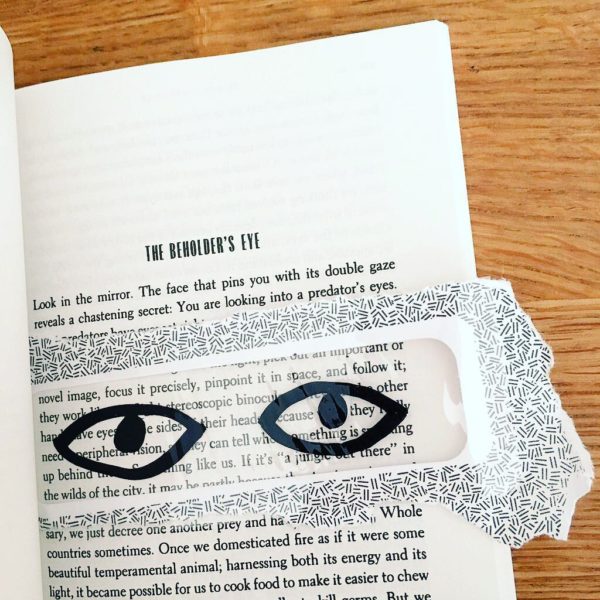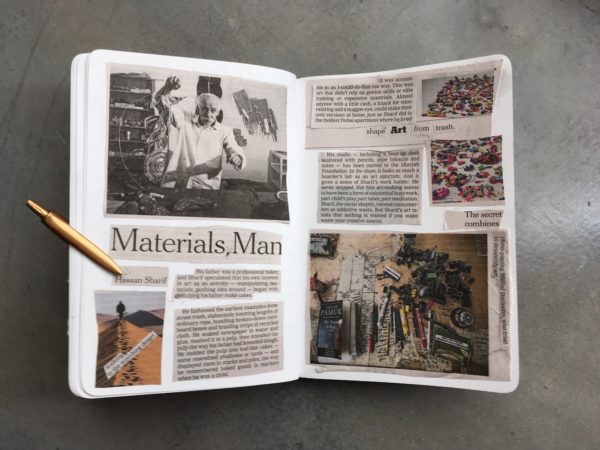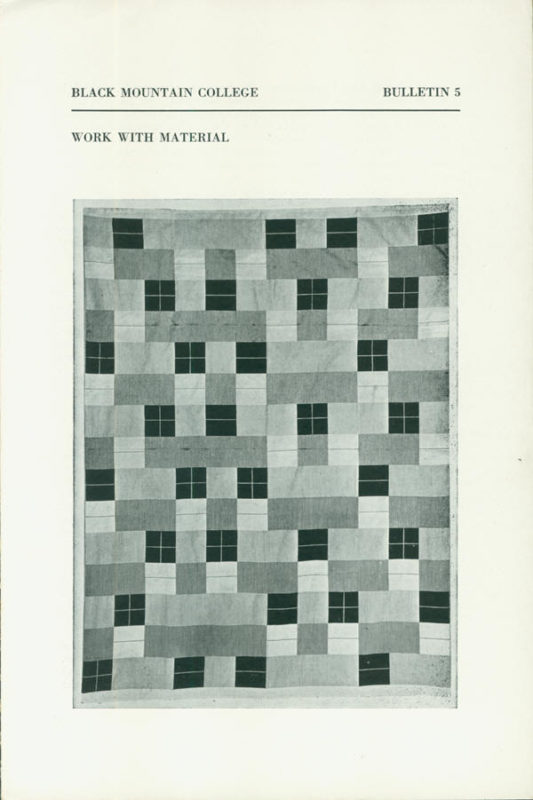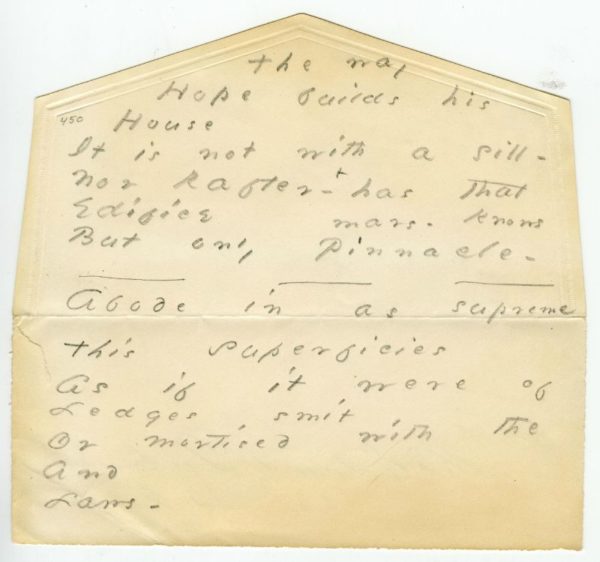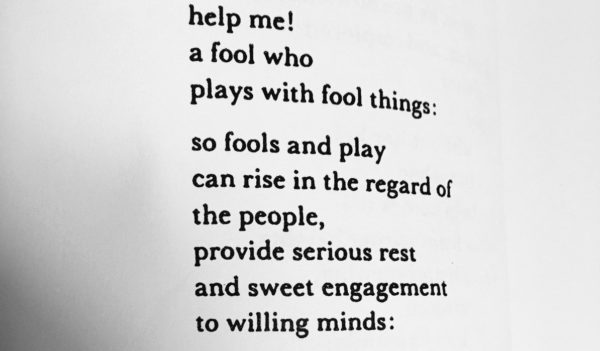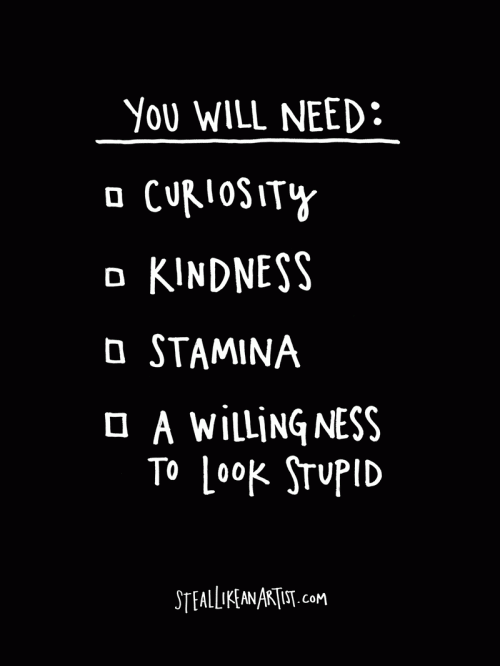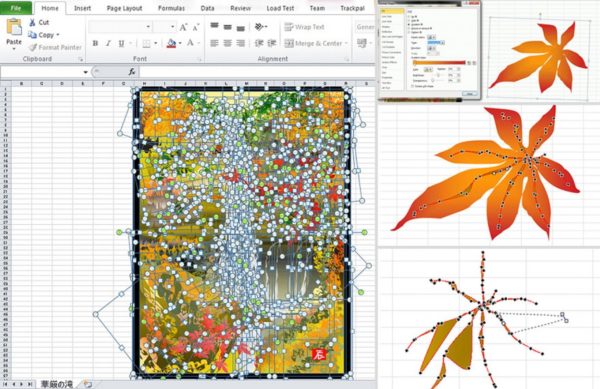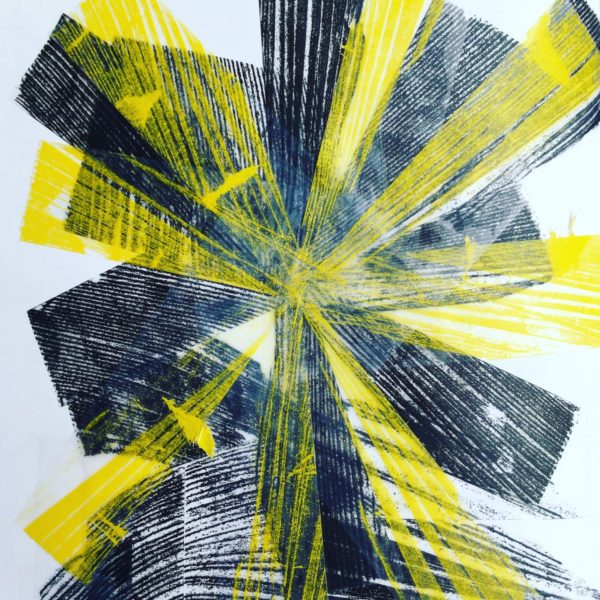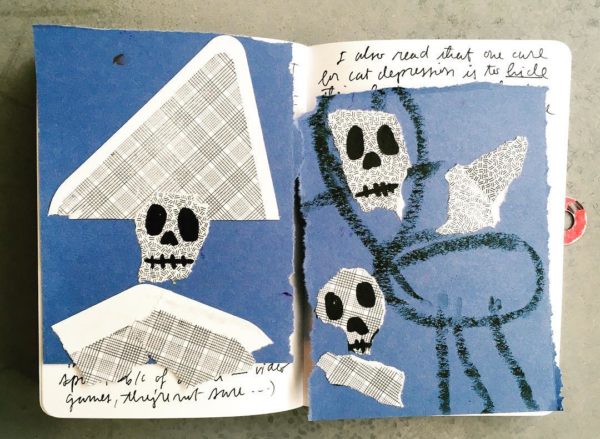
One of my favorite things about discovering a new material — like the security patterns on the inside of envelopes — is then attempting to exhaust the material. Seeing how many different ways I can use it. Trying to use every scrap of it. (Below: a bookmark for Diane Ackerman’s A Natural History of the Senses.) A great inspiration to me has been watching what Kelli Anderson does with paper.
